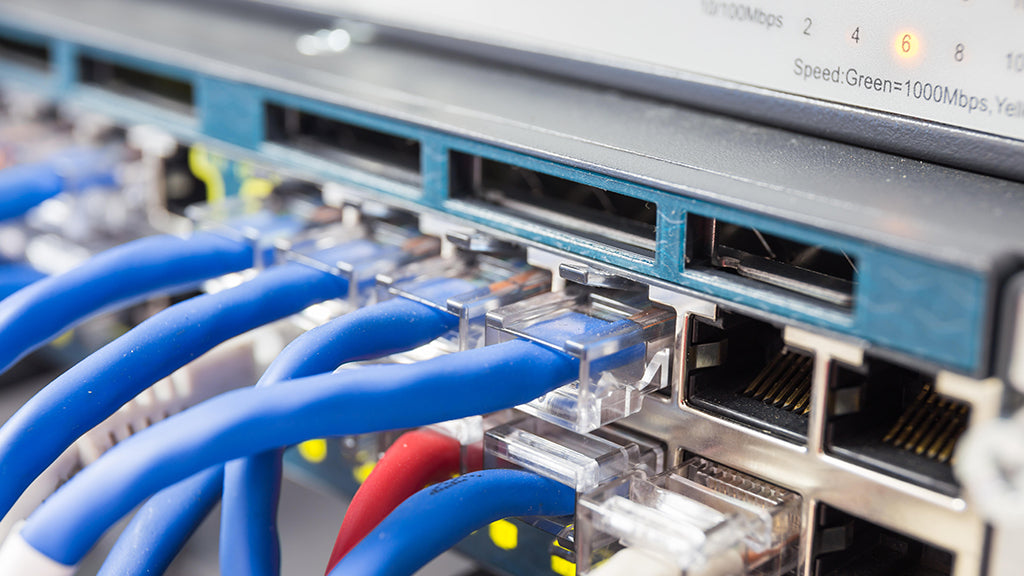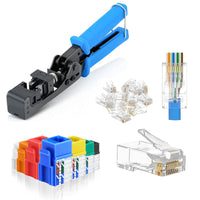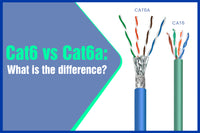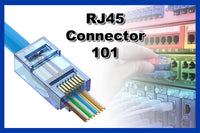When you surf the Internet or watch smart TV, have you ever noticed that there is an important part in the network? That is an Ethernet cable. An Ethernet cable is used to carry broadband signals between your computer and other routers, which offers high stability and security. With the development of technology, there are many types of Ethernet cables including Cat5, Cat5e, Cat6, Cat6a, Cat7, and Cat8 cables. Cat6 and Cat7 are widely used in our daily life, and we’ll mainly talk about the difference between Cat6 and Cat7 here.
What is Cat6?
Cat6 refers to Category 6 cable, which is a standardized cable with twisted pair for the network. Cat6 cables are backward compatible with Cat5 and Cat5e cables. Introduced by Telecommunications Industry Association (TIA) in 2002, the Cat6 cable is an improvement of Cat5e. Cat6 Ethernet cable features four pairs of wires for high performance. The maximum bandwidth of Cat6 is 250MHz and it offers a transmission speed of 10Gbps up to 55 meters (180 feet). Cat6 can be classified into shielded and unshielded Ethernet cables.

What is Cat7?
Cat7 is the abbreviation of Category 7 cable. Cat7 cable has higher bandwidth and faster data transmission speed. Cat7 cable features 4 shielded wire pairs and the cable itself is also shielded, which can effectively eliminate crosstalk and reduce noise. Cat7 supports the transmission speed of 10Gbps at a frequency of 600 MHz. Cat7 is backward compatible with Cat6a, Cat6, Cat5e, and Cat5 cables. But it should be noted that the Cat7 Ethernet cable is not recognized by ANSI/TIA and was developed by an international specification created by ISO/IEC.

Cat6 vs Cat7: What’s the Difference?
Cat6 and Cat7 share some similarities. For example, both of them feature eight copper conductors twisted into 4 pairs and they can be terminated according to T568A vs. T568B Wiring Standards. The most obvious differences between Cat6 and Cat7 are the speed, transmission frequency, and cabling length. Scroll down to see the difference between Cat6 and Cat7 Ethernet cables.
Specification
If you have a Cat6 and Cat7 Ethernet cable at hand, you can take a look at them and compare them. Cat7 Ethernet cable is usually a bit thicker than Cat6 Ethernet cable. Cat6 cables can be divided into unshielded and shielded types, while Cat7 cables usually feature braid shielding and shielded twisted pairs to help reduce crosstalk interference and reduce noise. So, the Cat7 cable will achieve a more stable network than the Cat6 cable.
Speed and Cabling Length
Cat6 Ethernet cable supports the cabling length of 100 meters (328 feet) with 1 Gbps and 37~55 meters (121~180 feet) with 10 Gbps; while Cat7 Ethernet cable can support up to 100 meters when transmitting 10 Gbps. In general, Cat7 Ethernet cable has a higher performance than Cat6 cables.
Transmission Frequency
One of the reasons why Cat7 is faster than Cat6 is the transmission frequency. Cat7 cable provides a transmission frequency of up to 600 MHz, and Cat6 cable only supports a frequency of up to 250 MHz.
GG45 vs RJ45
Compared to other Ethernet cables such as Cat5, Cat5e, Cat6, Cat6a, and Cat7, the Cat7 cable is a bit different. Cat7 network cable is not recognized by TIA/EIA and it doesn’t use the traditional RJ45 Connectors (also known as the 8P8C connector). GG45 connectors (GigaGate 45 connectors) are created for high-speed Cat7 cabling systems. GG45 is a proprietary connector that was developed by Nexans and standardized by IEC. It features 12 contacts to keep the maximum speed of Cat7 cables. Though GG45 connectors are compatible with RJ45 connectors, these connectors are hard to get. By the way, ARJ45 (Augmented RJ45) and TERA connectors are also designed for high-speed Cat7 cabling systems, but you can seldom see them in the industry.
Durability
Thanks to the heavier copper and shielding, the Cat7 Ethernet cable has a longer service life than the Cat6 Ethernet cable. It is estimated that Cat6 Ethernet cable has a life cycle of about 10 years; while Cat7 Ethernet cable has about 15 years.
Installation Cost
The higher bandwidth of the network, the thicker and heavier the Ethernet cable will be. So if you want to get a higher-speed network, it can be more difficult and costly to install. Cat7 Ethernet cable itself is more expensive than Cat6 Ethernet cable and the installation can also be more difficult. Professional installers usually choose to work with Cat7 cable at a higher price. So, if you have a limited budget, Cat6 Ethernet cables are more suitable for you.

Cat6 vs Cat7: How do I Choose?
Many people may be still confused about how to choose the right one. In fact, it depends on many factors. Do you only trust Ethernet cables with TIA/EIA recognition? If so, the Cat7 Ethernet cable is not suitable for you as it is not approved by TIA and EIA. Do you need an extra high network speed? If so, Cat7 cable is the winner. But if you have a tight budget and don’t need ultra-high network speed, Cat6 is more appropriate.

In general, Cat6 cables are recommended for home use. They are enough for normal home network use. Cat6 cables can support HD movies, gaming, and downloading. For average home network connection and small business users, Cat6 or Cat6a are the best choices. Cat7 cables are not used for home use and they are more suitable for commercial applications. For example, Cat7 cables are usually applied in data centers or other large networks in hospitals, governments, and large enterprises.

FAQs
Can I use Cat7 at home?
In fact, Cat7 can be overkill for your home use. Cat6 is enough for a home network connection. But if you need a similar performance as Cat7, you can also choose Cat6a which is a widely accepted cable standard.
Will CAT7 work with any router?
Not at all. Because the Cat7 cable may be not compatible with home networking equipment and it may perform as a Cat6 cable. Cat6 is recommended for the home network.
Is Cat7 faster than Cat6 cable?
Yes. Cat7 supports 10Gbps at a bandwidth of up to 600 MHz, while Cat6 supports 1Gbps at a bandwidth of up to 250 MHz.
For more information on this topic, you can keep up on our blogs. While VCELINK offers general and basic information for our customers and other visitors to the website, it’s not professional advice.






cat6 support 10gpbs
For home networking is Cat6 unshielded (UTP) suitable.. Does Cat6 support speeds of 10Gbps.. I taught only Cat7 was 10Gbps and Cat8 was 40Gbps..?? While Cat5e and Cat 6 was 1Gbps.. Thank you, Declan, Ireland